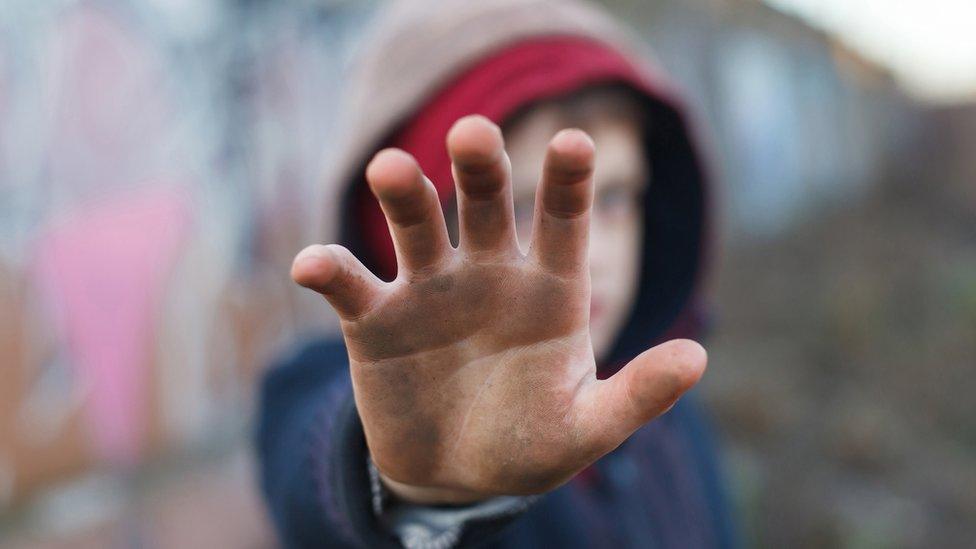Support for child poverty plans welcomed
- Published

Child poverty rates are lower now than they were 10 and 20 years ago
Plans aimed at dramatically cutting child poverty rates in Scotland have been backed in a consultation.
The Child Poverty Bill would commit the government to reducing the number of children living in relative poverty to less than 10% by 2030, and in absolute poverty to less than 5%.
The rates currently stand at 22% and 21% respectively.
The Scottish government will bring forward the bill in the new year.
It has published the 116 responses to its consultation, external on the proposals, which would also protect families' income by law.
Poverty report
Equalities Secretary Angela Constance said "simply unacceptable" that many children are still growing up in poverty in Scotland.
And she said it was encouraging to see "overwhelming support" for the proposals aimed at tackling the problem.
The responses were published alongside the government's annual child poverty report, external, which covers 2014/15.
It showed that 220,000 children were classed as living in relative poverty once housing costs were deducted - a figure that has remained constant for the previous three years, and which is higher than the 19% recorded in 2011/12.
The report also said 200,000 children were living in absolute poverty once housing costs were taken into account - 30,000 fewer than the previous year.

What are relative and absolute poverty?
Relative poverty - the percentage of children living in households with a net incomes less than 60% of the current UK median household income
Absolute poverty - the percentage of children living in households with net incomes of less than 60% of UK median household income in 2010/11, adjusted for inflation

Both measure of child poverty have fallen over the past two decades, with relative poverty standing at 31% and absolute poverty at 41% in 1998/99, including housing costs.
The most recent UK government figures - which covered 2013/14 - showed there were 2.3 million living in relative poverty across the UK.
The Scottish government report also showed that the number of children classed as living in low income and material deprivation after housing costs had fallen by 20,000 after two years of increases.
Material deprivation is a measure of whether children are going without necessities which are considered essential to maintaining an acceptable standard of living.
Little change
There was little change in many of the 37 measurements of deprivation and inequality contained in the report.
But the nine measurements that did show improvement included a narrowing in the employment rate gap between the most deprived areas and the rest of Scotland.
The percentage of school leavers from the most deprived areas who are classed as being in "positive destinations" has also increased
And the employment rate of parents has increased while the percentage of parents with low or no qualifications has decreased.
Ms Constance said: "For those areas where we can do better, we can use this report to help inform our approach and actions going forward."
Some political opponents have criticised ministers for not using Holyrood's new tax powers to combat inequality - but the Scottish government argues that tax rises would penalise low earners.
Scottish Green MSP Alison Johnstone said: "We have the ability with our income tax powers to give lower earners a tax cut while generating more funds for anti-poverty measures and public services by ensuring higher earners pay a fairer share.
"Today's report shows boldness is required if we're to see improvements in child poverty levels."